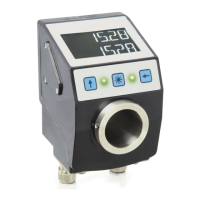Table 9: Bus parameters
4.5.3 Diagnosis
To receive a list of all errors occurring from chapter 4.4.2 of the device, the device must be
switched to diagnosis operation. Enter CODE "200000" in parameterization (see chapter 4.3.1)
and confirm by pressing the key. Any errors occurring are output indicating the error
number and total of occurrences in the upper row. The type of error is shown in the lower row.
Error number 1 contains the latest error. The oldest error is output with the highest error
number.
5 Communication via CAN bus (CANopen)
The CiA DS-301 V4.2 CANopen communication profile as well as the Device profile for Encoders
CiA DS-406 V3.2 form the basis for AP10, which supports device class C2. As this device is
beyond the scope of an encoder's functionality, communication partly differs from the above-
mentioned device profile. This document contains the details necessary for understanding the
operation of the device. If more-in-depth information is required, we recommend to consult
the pertinent specialized literature on CAN or CANopen.
5.1 Telegram setup
The data telegram of a CAN message consists of the following fields:
SOF:
(Start of Frame) start bit of the telegram
Identifier (COB-ID):
• All bus sharing units check via identifier whether the message is relevant for them.
• The identifier sets the priority of the message. The lower the value of the identifier, the
higher the priority of the message. This results in preferential transfer of messages via the
bus.
The Identifier field contains the identifier as well as bits for the recognition of the length of
the identifierss (11 or 29 bit). Furthermore, the identifier serves for determining the device
address, the channel selection as well as the direction of data transfer.
The 11bit identifier (COB identifier) consists of a 4bit function code and a 7bit node number:

